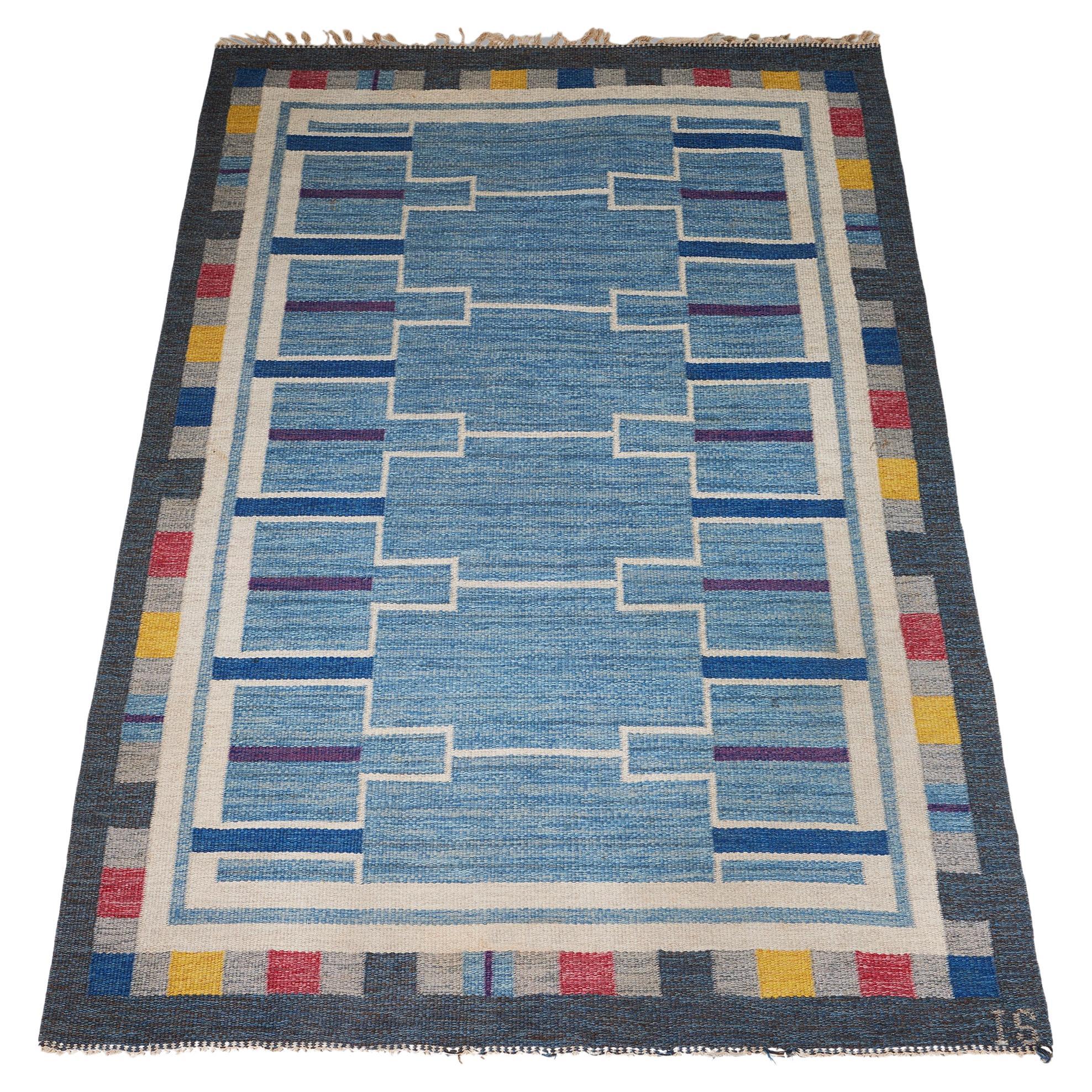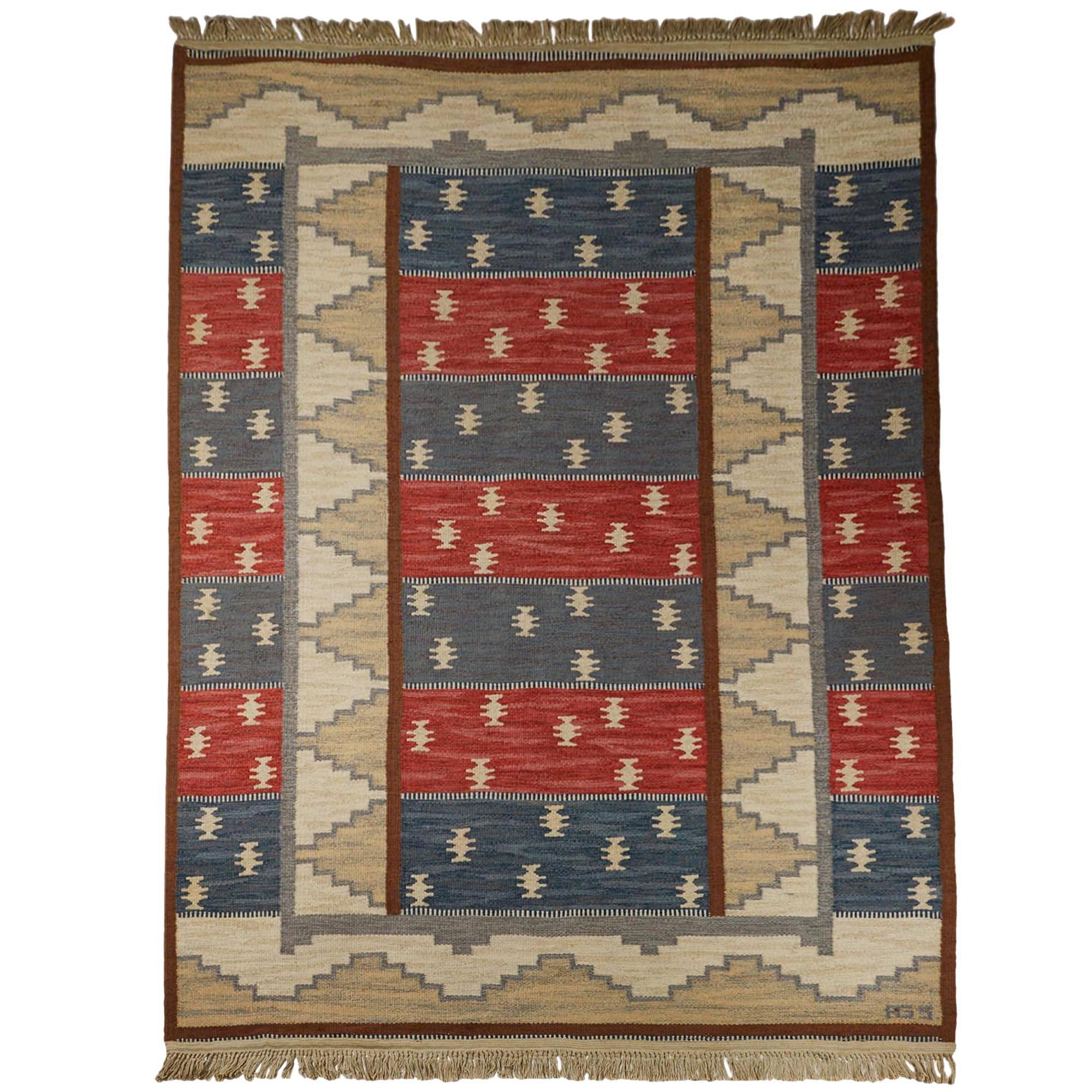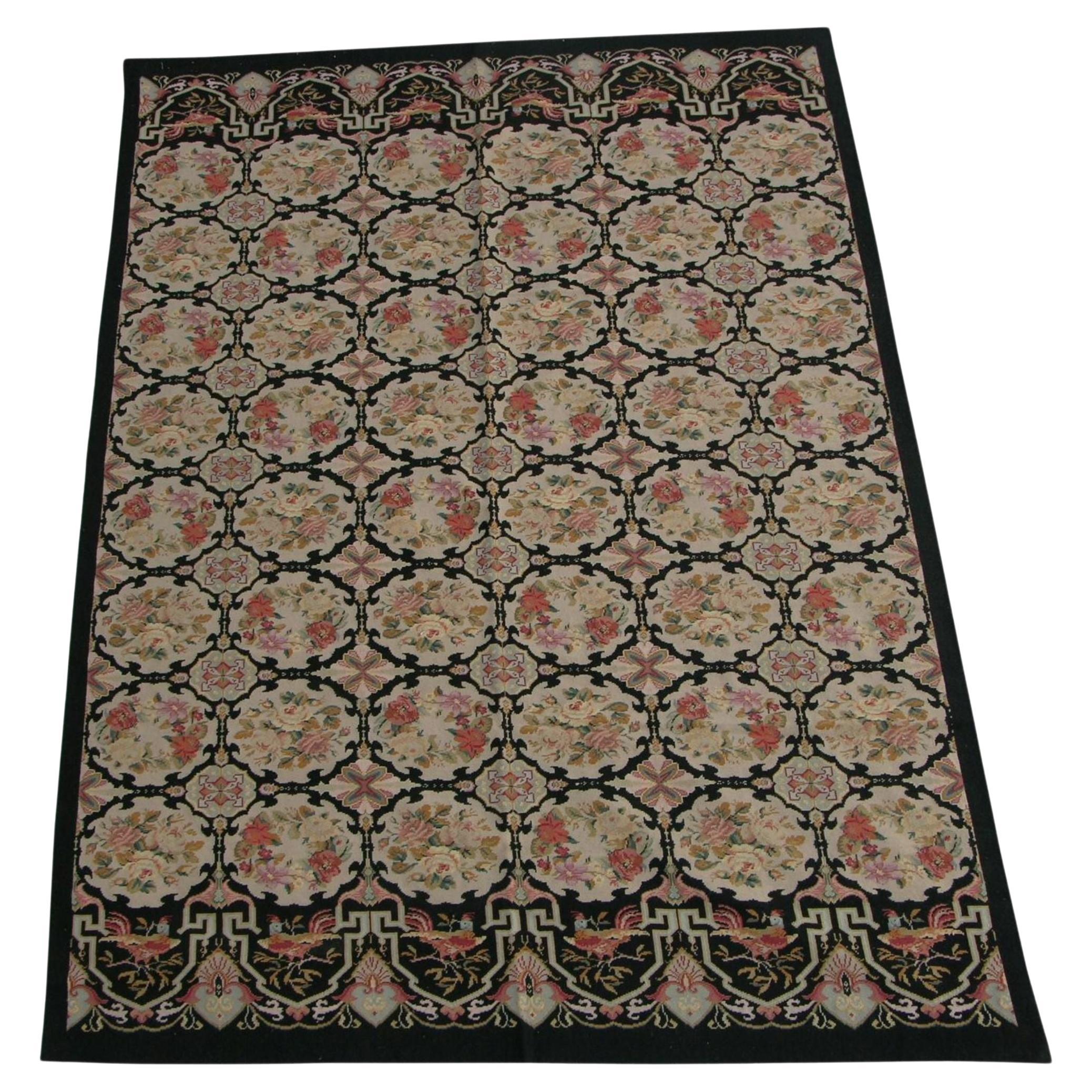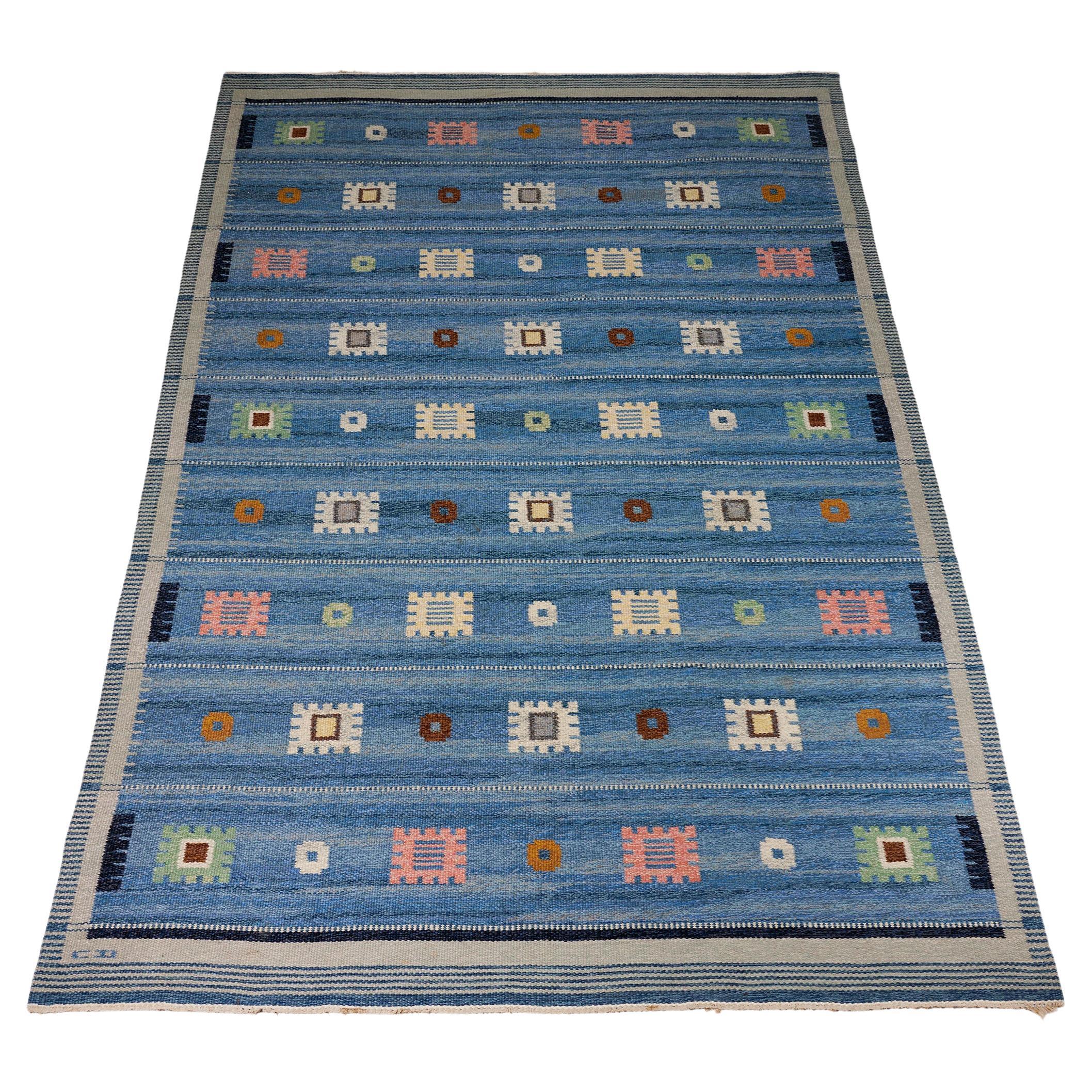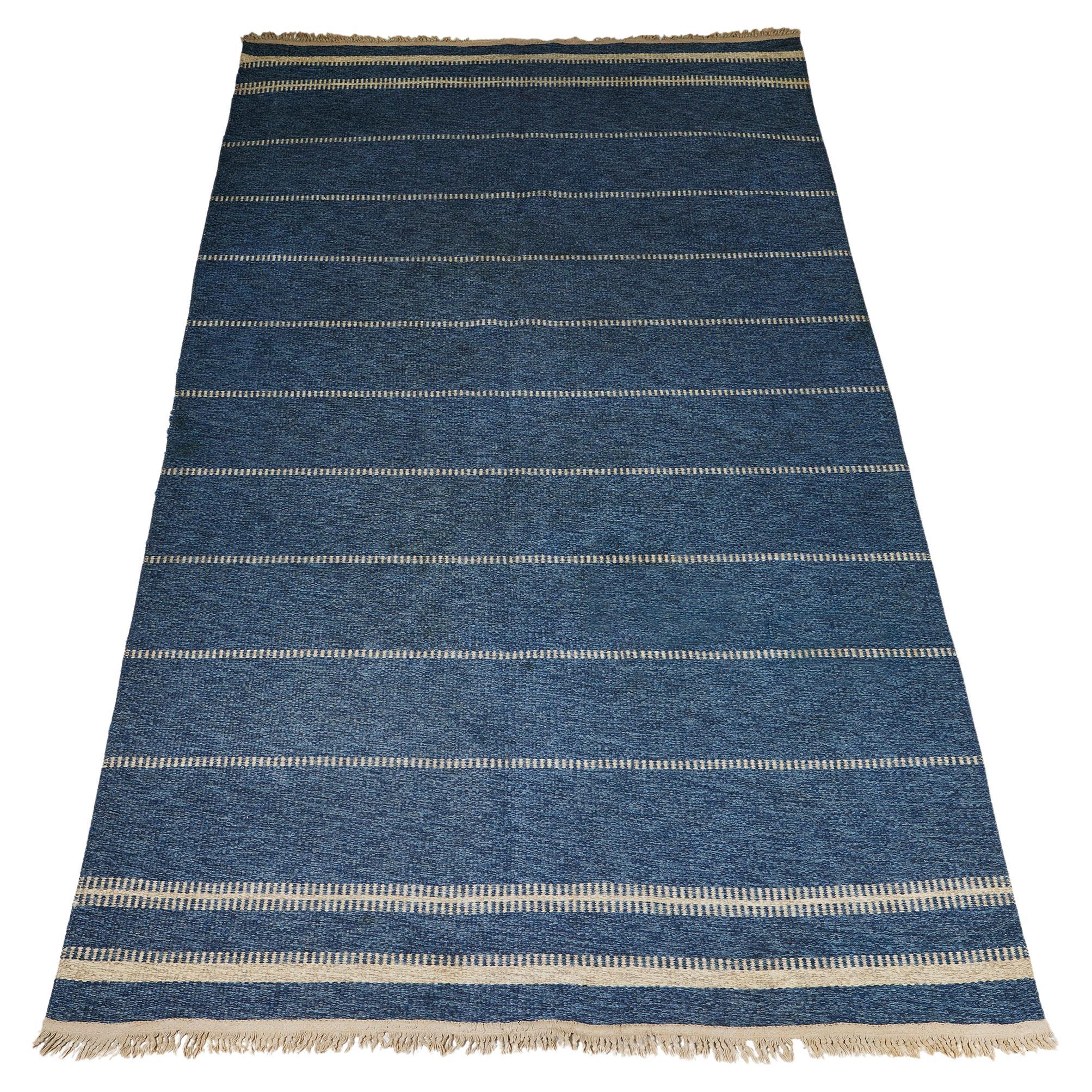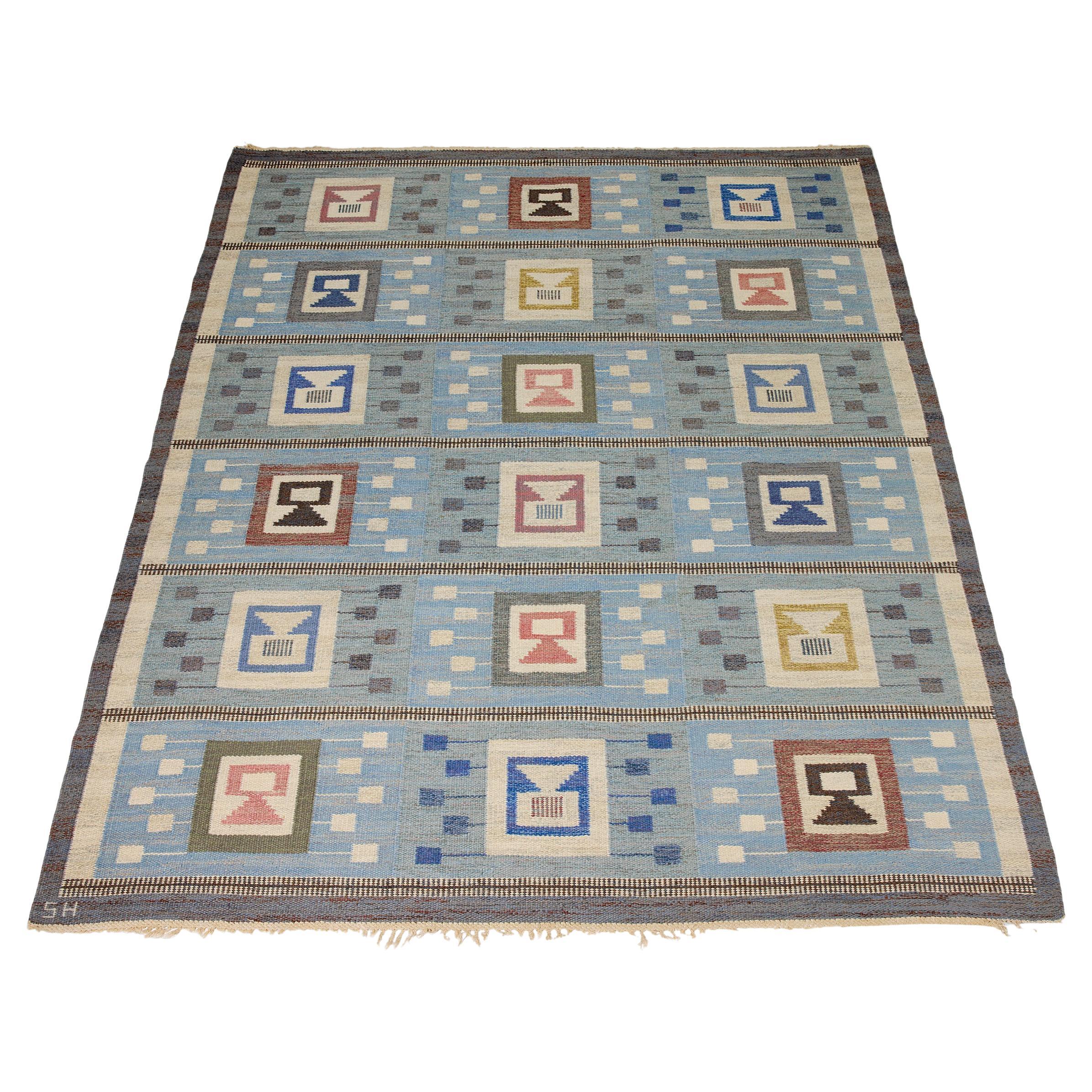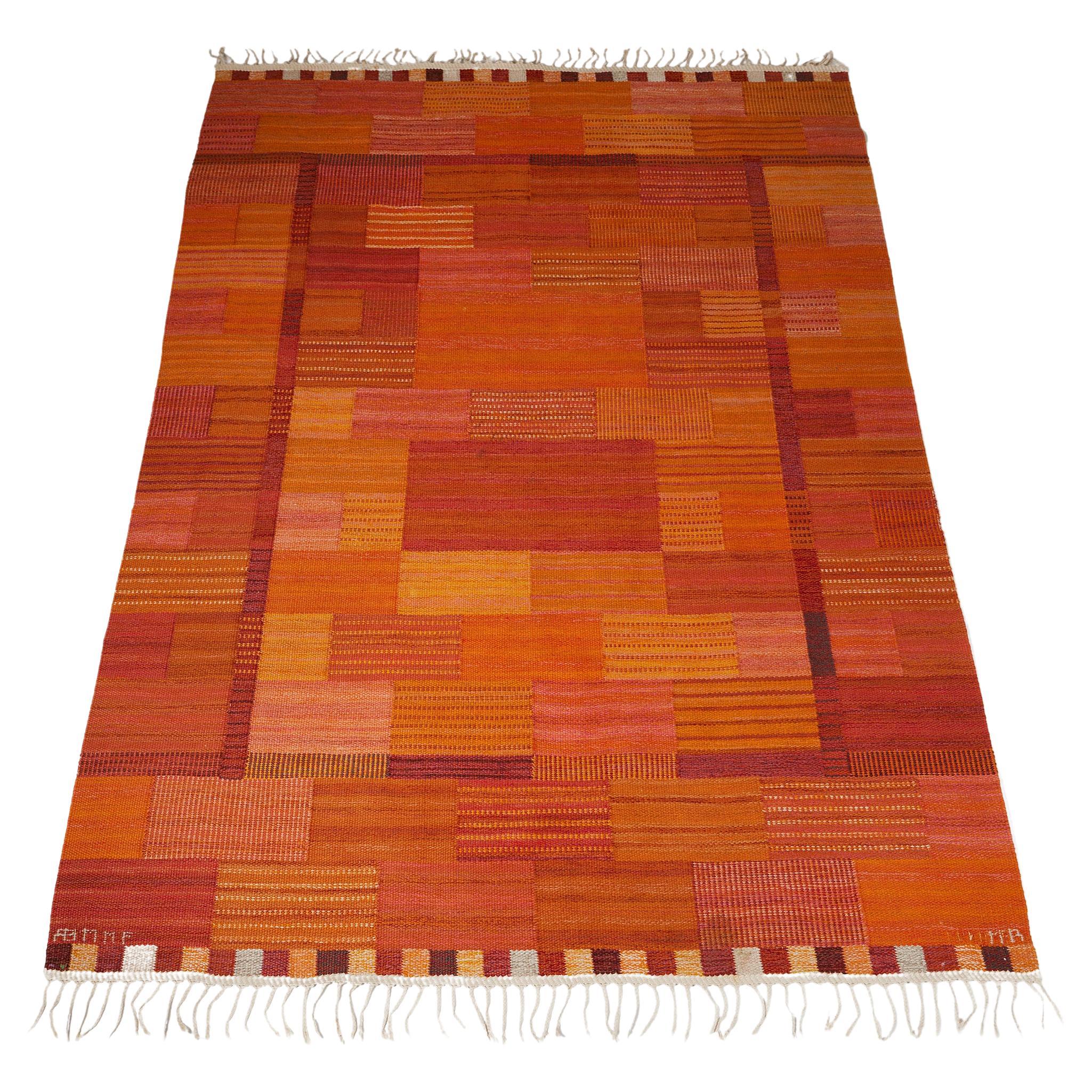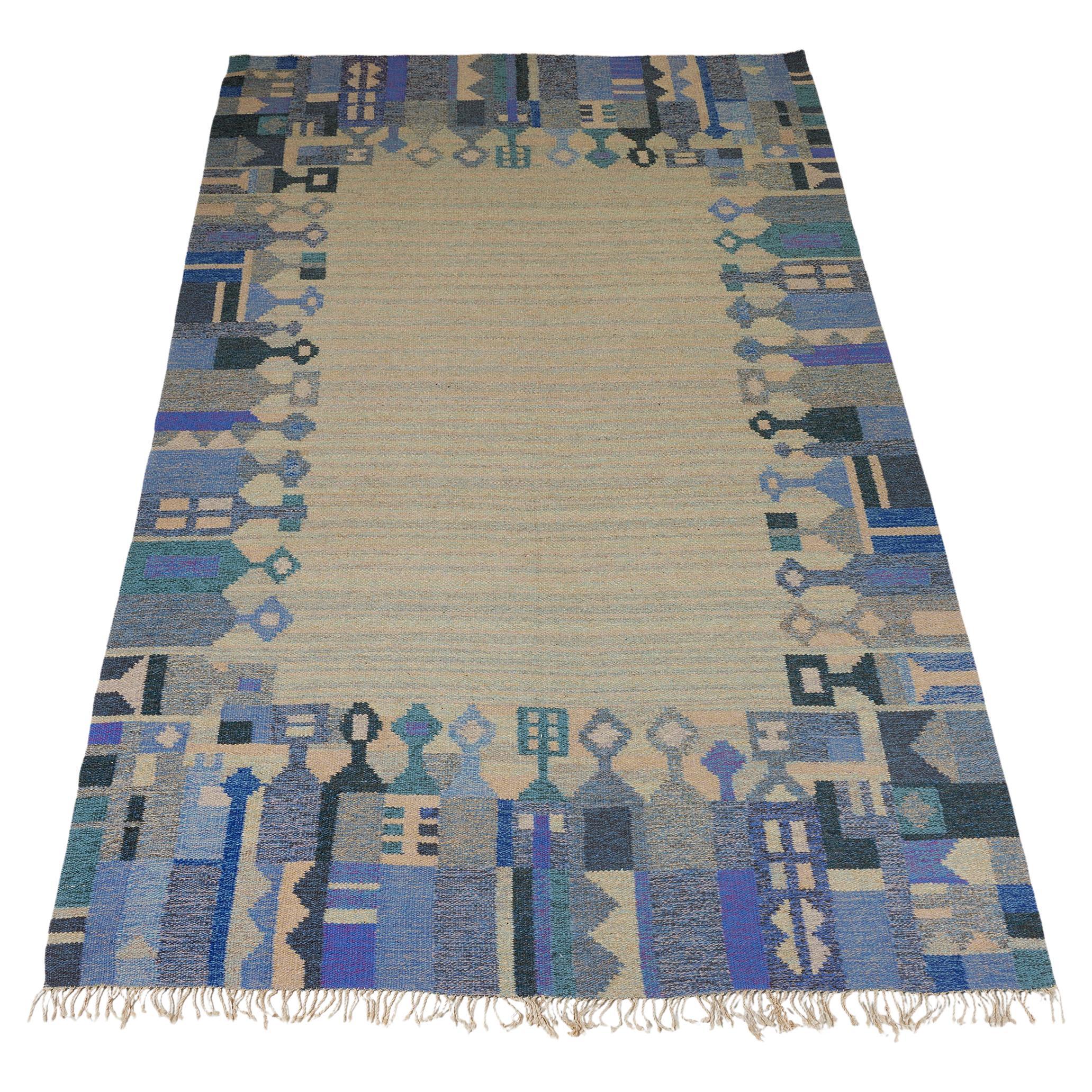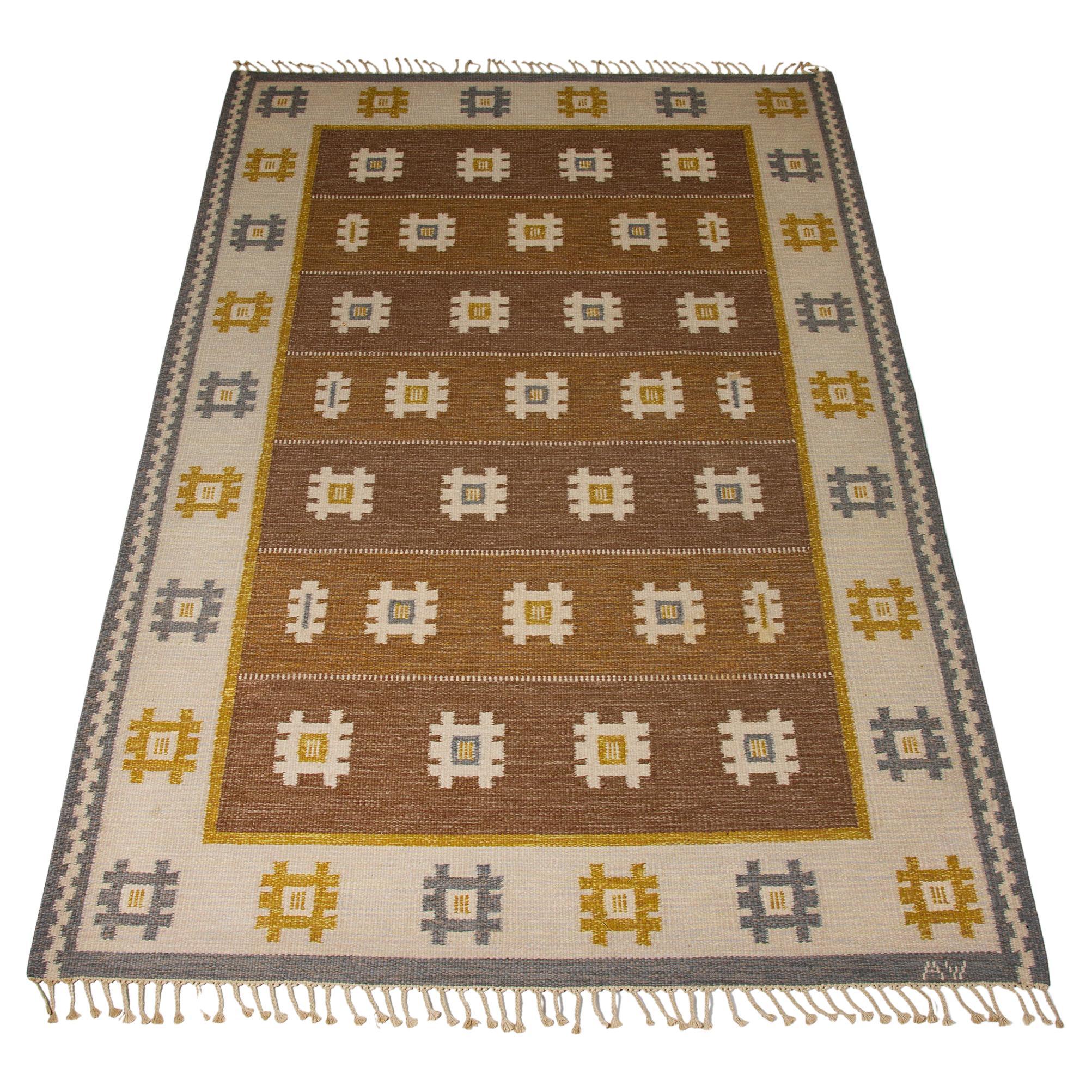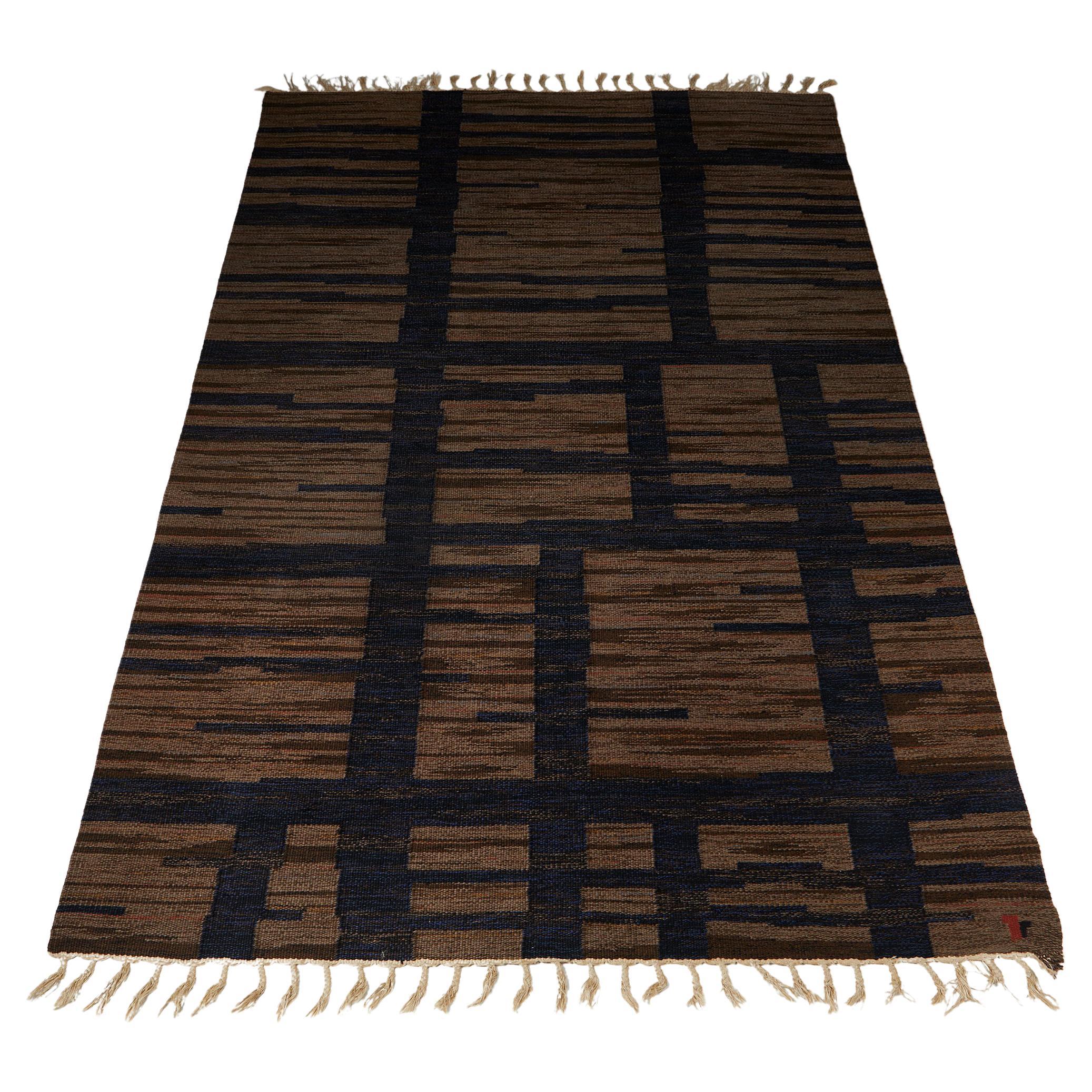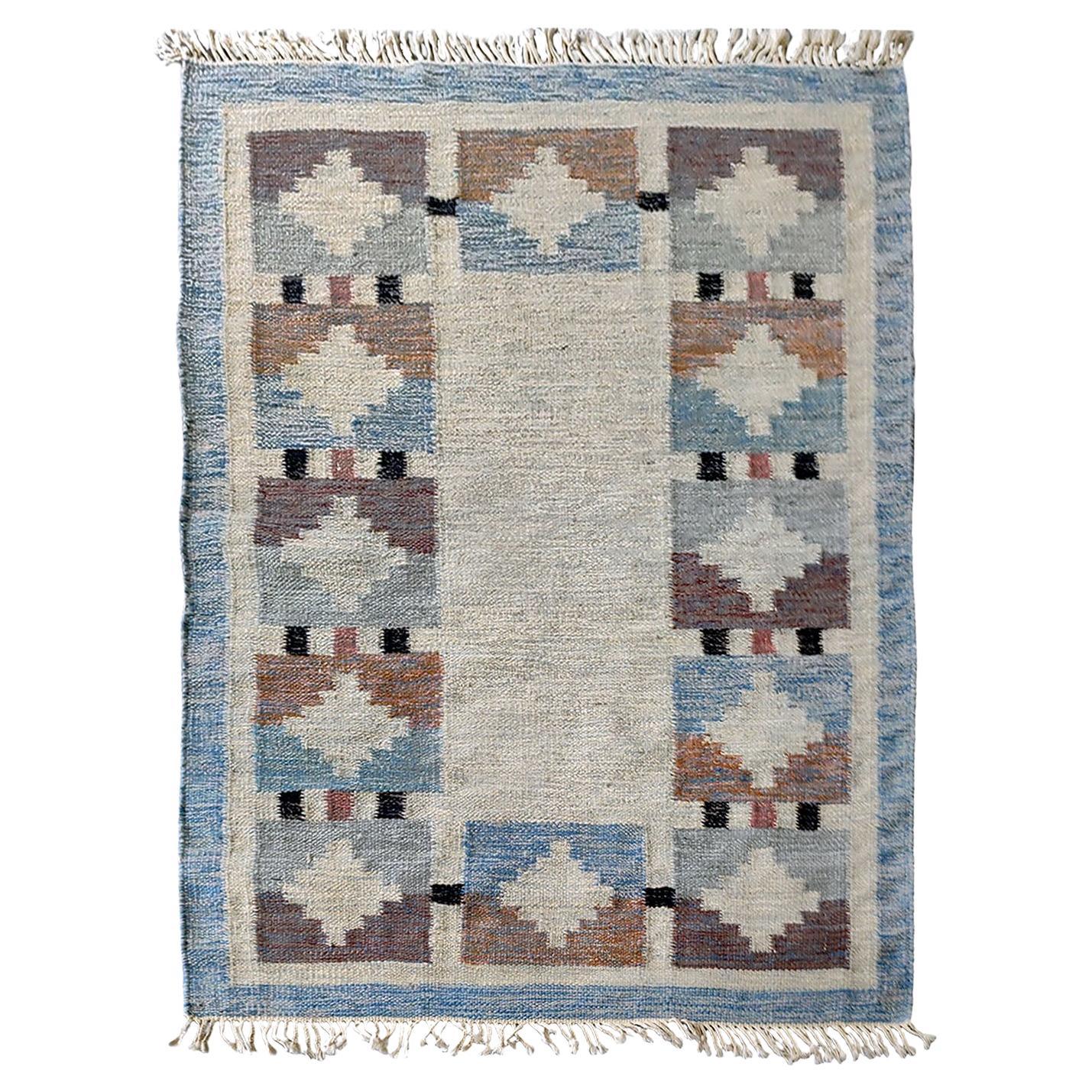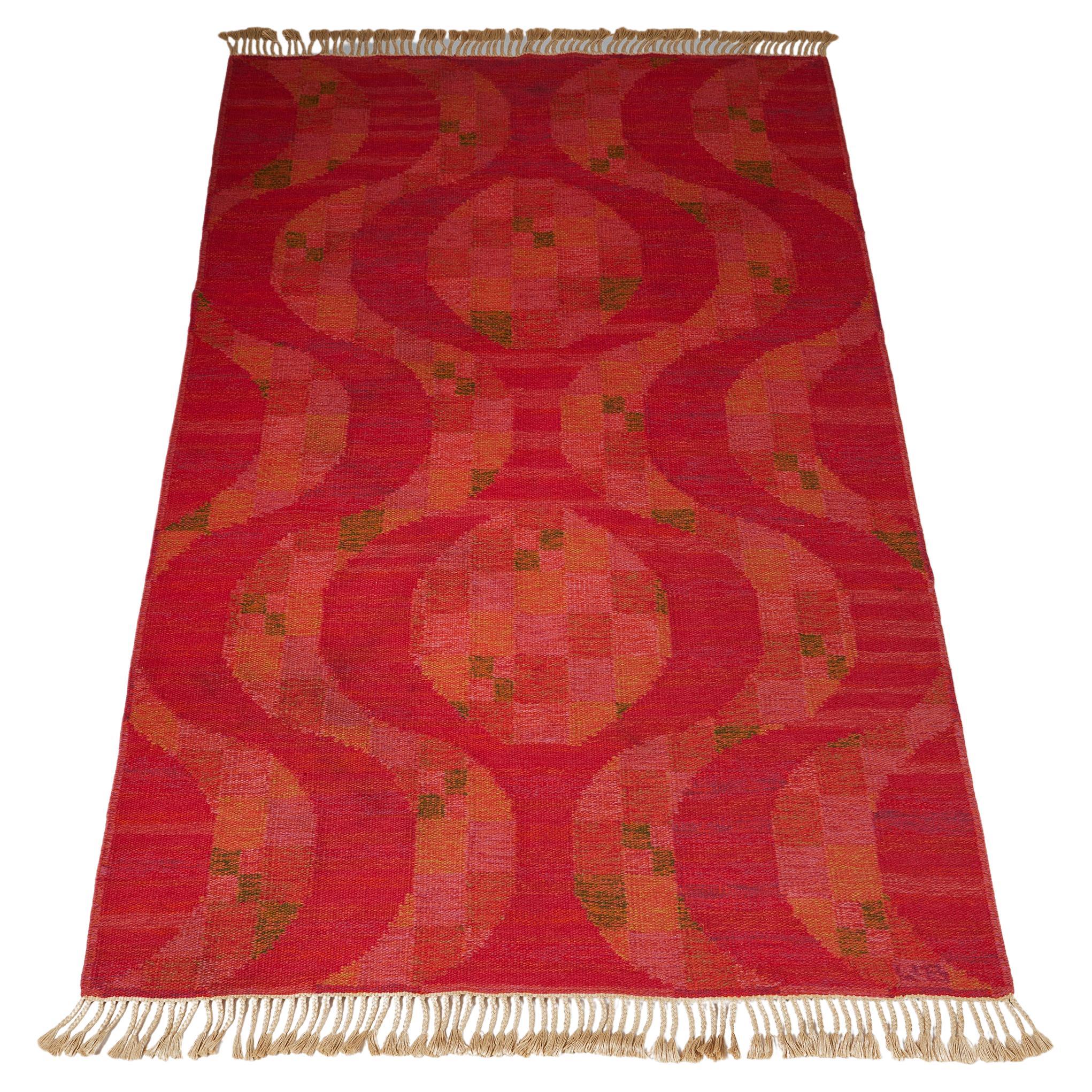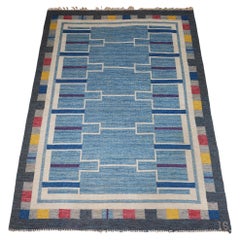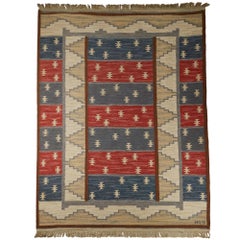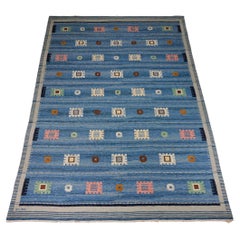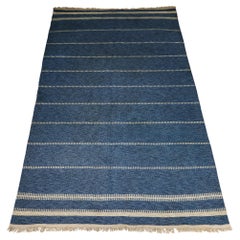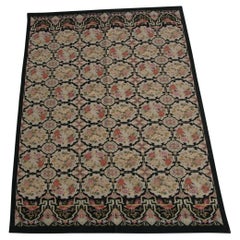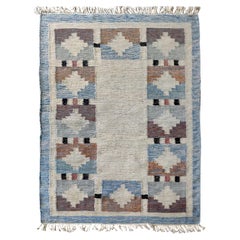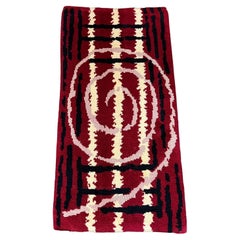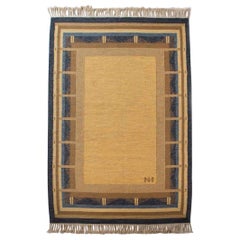
Rug 'Höst' designed by Kirsten and John Becker, Denmark, 1950s
View Similar Items
Want more images or videos?
Request additional images or videos from the seller
1 of 5
Rug 'Höst' designed by Kirsten and John Becker, Denmark, 1950s
About the Item
- Dimensions:Width: 89.77 in (228 cm)Length: 163.59 in (415.5 cm)
- Style:Mid-Century Modern (Of the Period)
- Materials and Techniques:
- Place of Origin:
- Period:
- Date of Manufacture:1950s
- Condition:
- Seller Location:Stockholm, SE
- Reference Number:1stDibs: LU1006635657982
About the Seller
5.0
Recognized Seller
These prestigious sellers are industry leaders and represent the highest echelon for item quality and design.
Established in 1998
1stDibs seller since 2013
202 sales on 1stDibs
Typical response time: 1 hour
Authenticity Guarantee
In the unlikely event there’s an issue with an item’s authenticity, contact us within 1 year for a full refund. DetailsMoney-Back Guarantee
If your item is not as described, is damaged in transit, or does not arrive, contact us within 7 days for a full refund. Details24-Hour Cancellation
You have a 24-hour grace period in which to reconsider your purchase, with no questions asked.Vetted Professional Sellers
Our world-class sellers must adhere to strict standards for service and quality, maintaining the integrity of our listings.Price-Match Guarantee
If you find that a seller listed the same item for a lower price elsewhere, we’ll match it.Trusted Global Delivery
Our best-in-class carrier network provides specialized shipping options worldwide, including custom delivery.More From This Seller
View AllRug Designed by Ingegerd Silow, Sweden, 1950s
By Ingegerd Silow
Located in Stockholm, SE
Rug designed by Ingegerd Silow,
Sweden, 1950s.
Signed.
Wool.
Measurements:
L: 253 cm / 8' 3 1/2''
W: 168 cm / 5' 6 1/2''
Category
Mid-20th Century Swedish Mid-Century Modern Russian and Scandinavian Rugs
Materials
Wool
Rug designed by Anna-Greta Sjöqvist, Sweden, 1950s.
By Anna-Greta Sjöqvist
Located in Stockholm, SE
Rug designed by Anna-Greta Sjöqvist,
Sweden. 1950s.
Pure wool.
Kelim technique.
Measurements:
L: 244 cm/ 8''
W: 180 cm/ 5' 11''
Category
Vintage 1950s Swedish Scandinavian Modern Russian and Scandinavian Rugs
Materials
Wool
Rug Designed by Carl Dangel, Rölakan Flatweave Technique, Sweden, 1950s
By Carl Dangel
Located in Stockholm, SE
Rug designed by Carl Dangel,
Sweden, 1950s.
Handwoven wool carpet in Rölakan flatweave technique.
Signed.
Dimensions:
L: 304 cm / 9’ 11 3/4’’
W: ...
Category
Vintage 1950s Mid-Century Modern Russian and Scandinavian Rugs
Materials
Wool
Rug, Anonymous, Sweden, 1950s
Located in Stockholm, SE
Rölakan technique.
Wool.
Measures: L: 313 cm / 10' 3 1/4''
W: 176 cm / 5' 9 1/4''.
Category
Mid-20th Century Swedish Mid-Century Modern Russian and Scandinavian Rugs
Materials
Wool
Rug 'Girls in the window' designed by Edna Martin, 1950s
By Edna Martin
Located in Stockholm, SE
Rug ‘Flickorna i fönstret’ designed by Edna Martin.
L: 254 cm / 8' 4"
W: 202 cm / 6' 7 1/2"
Category
Vintage 1950s Russian and Scandinavian Rugs
Materials
Wool
Rug ‘Façade, Orange, Red’ Designed by Marianne Richter for MMF, Sweden, 1950s
By Marianne Richter
Located in Stockholm, SE
Rölakan technique.
Wool.
Category
Mid-20th Century Swedish Mid-Century Modern Russian and Scandinavian Rugs
Materials
Wool
You May Also Like
1950s Vintage Floral Design Needlepoint Rug
Located in Los Angeles, US
Ancient Roots Of Needlepoint Rugs
Archaeologists and scholars consider the roots of needlepoint to have been around 1500 BC. They consider the first needlepoint to include the fine diagonal stitches that were used to sew tents together by the ancient Egyptians. The art eventually evolved into tapestry weaving. However, a tapestry weaving differs significantly from needlepoint in that it uses a loom and vertical warp.
Tapestry weaving is closer to the weaving of kilims and pile rugs than canvas work. However, some still include tapestry weaving in the category of needlepoint because of the fine work that appeared during the late Renaissance. It can have a similar appearance to the untrained eye. Technically, tapestry weaving and needlepoint are not the same, and they do not use the same technique.
The first actual needlepoint rugs and needle-points began to appear in the late Renaissance. Needlepoint is worked by creating stitches on a stiff canvas. The canvas is typically made from jute or linen and is quite durable. Pieces from the Renaissance were used to cover footstools, chairs, pillows, bed headboards, and other furnishings. They were also used as table coverings and wall coverings. You could also find them on many small items such as purses, shoes, and various adornments for clothing.
During the Renaissance, the craft reached a high level of skill, and the designs became incredibly detailed and realistic. They mimicked many of the subjects and styles of famous paintings of the time. They created florals, still life designs, scenes, and geometric tiled pieces. Some of them mimicked the designs found in Persian Carpets.
Needlepoint reached its peak popularity in the 19th century when it was considered a proper occupation for a lady. Needlepoint and embroidery held a similar place in societal status at the time. During this time, the work became finer, with some of the canvas reaching a high level of detail. The level of detail is determined by counting the number of mesh in an inch. During this time petit point by French needlewomen could have a mesh count as high as 45 mesh. This allowed women to create highly intricate designs with incredible levels of detail.
Historical Needlepoint Carpets and Rugs
It is possible to find many antique pieces of needlepoint besides rugs. Needlepoint rugs were popular in France and Spain, where the technique was adapted to create highly intricate designs that mimicked the designs in architecture and fashion. They were popular because they were durable, and it could be fashioned into a variety of items. The canvases themselves were durable, and the wool that they used was also strong, which means that many of the pieces were able to withstand daily use. We have many artifacts that have survived from this time period.
Needlepoint rugs are important collectibles because they are different from the pile rugs and kilims that are typically found on the market. Needlepoint carpets are special because they take many hours to create, especially larger works. Needlepoint pieces of any type became popular throughout Europe during the 19th century. It is still a popular hobby today, but perhaps one of the most interesting stories is that of the Portuguese needlewomen of Arraiolos.
The story of these women and their beautiful carpets begins in 1492. Needlepoint was a popular occupation in Spain, which had a large population of Moors and Jews. They were an integral part of Spanish culture. However, in 1492, Queen Isabella of Spain issued a proclamation that gave these ethnic groups the order to pack their bags and board ships headed...
Category
Vintage 1950s Other Russian and Scandinavian Rugs
Materials
Wool
Genuine Vintage Swedish Kilim Rug, Geometric Design, attr. Karin Jönsson 1950s
Located in Bochum, NRW
Genuine Vintage Scandinavian Kilim rug, design attributed to Karin Jönsson.
The color palette comprises of gentle shades of beige, brown and grey, with black and rust pink accents, ...
Category
Vintage 1950s Swedish Mid-Century Modern Russian and Scandinavian Rugs
Materials
Wool
1960s-1970s Runner Rug Carpet Rug Space Age Denmark Danish Design
Located in Neuenkirchen, NI
1960s-1970s runner rug carpet rug space age Denmark Danish Design
Object: carpet
Manufacturer:
Condition: good - vintage
Age: around 1960-...
Category
Vintage 1970s European Russian and Scandinavian Rugs
Materials
Wool
Alestalon Mattokutomo, Golden and Blue Finnish Flat-Weave Rug, Finland, 1950s
By Alestalon Mattokutomo
Located in Los Angeles, CA
Alestalon Mattokutomo - golden and blue Finnish flat-weave rug, Finland, 1950s
Handmade flat-weave by Alestalon Mottokutom, this exquisite and rare piece has a golden table of Cla...
Category
Mid-20th Century Finnish Mid-Century Modern Russian and Scandinavian Rugs
Materials
Wool, Linen
$4,550 Sale Price
30% Off
“Strålar Gul” Vintage Swedish Flat-Weave Rug by Marianne Richter c. 1950s
By Marianne Richter
Located in New York, NY
“Strålar Gul” Vintage Swedish Flat-Weave Rug by Marianne Richter c. 1950s
Size: 6'9" × 10'0" (205 × 304 cm)
A bold testament to mid-century Scandinavian textile artistry, this rare v...
Category
Mid-20th Century Scandinavian Mid-Century Modern Russian and Scandinavia...
Materials
Wool
Vintage Scandinavian Kilim Rug, circa 1950s
Located in Los Angeles, CA
This is a vintage Scandinavian Kilim rug woven circa 1950s with quite a beautiful composition. It features an elegant display of floral ...
Category
Mid-20th Century Scandinavian Scandinavian Modern Russian and Scandinavi...
Materials
Wool
Recently Viewed
View AllMore Ways To Browse
Chambron Votre Pair
Champagne Goblets
Channel Dining Chair
Chinese Antique Platters
Chinese Horseshoe
Chinese Painted Tiles
Chinese Straight Back Chair
Circular Leather Sofa
Classic Leather Wingback Chair
Cobalt Blue Sterling Silver
Cobalt Blue Velvet
Cobalt Dinner Plate Sets
Coffee Table 42 Deep
Coffee Table Ball Base
Colonial Wood Coffee Table
Copper And Brass Hammered Tray
Corner Chair Ottoman
Cream Colored Wood Chairs
